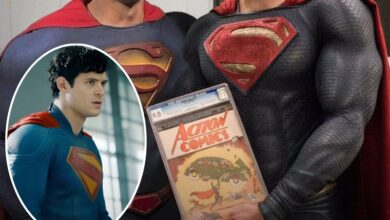The Role That Made Marilyn Monroe Feel Insecure
OPINION: This article may contain commentary which reflects the author's opinion.
Marilyn Monroe remains one of Hollywood’s most enduring icons, celebrated for her beauty, charisma, and talent. Yet beneath the glitz and glamour, Monroe grappled with deep-seated insecurities that were shaped by a complex mix of personal experiences and professional challenges. While no single film role defined her self-doubt, certain parts—and the industry’s treatment of her—contributed significantly to her feelings of inadequacy.
Early Career and the Burden of Typecasting
From the outset of her career, Monroe was often pigeonholed into the “dumb blonde” or “sex symbol” archetype. Though these roles brought her fame, they left her yearning for recognition beyond her physical appearance. She desired to be acknowledged for her acting skills, but studios frequently cast her in parts that emphasized glamour over depth. This typecasting fostered frustration and a sense of being misunderstood and undervalued as an artist.
Let’s Make Love (1960): A Role She Regretted
Among the roles that deepened her dissatisfaction was Let’s Make Love. Monroe herself regarded this film as one of the worst in her career, criticizing the script’s lack of substance. “There was nothing there with the writing,” she lamented, feeling the project was little more than a contractual obligation rather than a passion project. Her then-husband, playwright Arthur Miller, also expressed frustration with the film, famously comparing his attempts to improve the script to “putting plaster on a peg leg.”
Personal Struggles and Public Perception
Monroe’s insecurities extended beyond her professional work. A traumatic childhood, battles with mental health, and the pressures of her public image all compounded her sense of vulnerability. She often remarked on how people projected their fantasies onto her rather than seeing her true self. “People had a habit of looking at me as if I were some kind of mirror instead of a person,” she once said. “They didn’t see me, they saw their own wildest dreams.”
These experiences shaped how Monroe approached her career and contributed to moments of self-doubt that surfaced both on and off screen.
A Complex Legacy of Insecurity and Stardom
In sum, while no single film role made Marilyn Monroe feel insecure, the accumulation of typecasting, disappointing projects like Let’s Make Love, and her personal battles with identity and public perception all played a part in her feelings of inadequacy. Her story reveals the often unseen toll of fame and reminds us that behind the image of a star, there is a person wrestling with real struggles.



